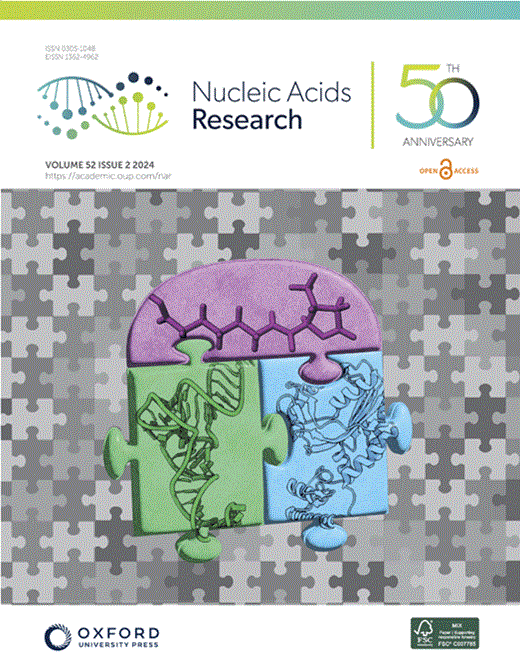The ortholog of human DNAJC9 promotes histone H3–H4 degradation and is counteracted by Asf1 in fission yeast
IF 16.6
2区 生物学
Q1 BIOCHEMISTRY & MOLECULAR BIOLOGY
引用次数: 0
Abstract
Mammalian J-domain protein DNAJC9 interacts with histones H3–H4 and is important for cell proliferation. However, its exact function remains unclear. Here, we show that, in the fission yeast Schizosaccharomyces pombe, loss of Djc9, the ortholog of DNAJC9, renders the histone chaperone Asf1 no longer essential for growth. Utilizing AlphaFold-based structural prediction, we identified a histone-binding surface on Djc9 that binds to helix α3 of H3 in a manner that precludes simultaneous helix α3-binding by Asf1. Djc9 and Asf1 indeed compete for binding to the H3–H4 dimer in vitro, and an H3-α3 mutation impeding Djc9 binding also renders Asf1 non-essential, indicating that the role of Asf1 needed for growth in fission yeast is to prevent histone binding by Djc9. In the absence of Asf1, cell growth is hindered due to unrestrained Djc9-mediated downregulation of H3 and H4. In the presence of Asf1, Djc9 confers resistance to the DNA replication inhibitor hydroxyurea and dominant negative disease-related histone mutants by promoting the degradation of superfluous or dysfunctional histones. Our findings provide new insights into the function and mechanism of this conserved histone-binding protein.求助全文
约1分钟内获得全文
求助全文
来源期刊

Nucleic Acids Research
生物-生化与分子生物学
CiteScore
27.10
自引率
4.70%
发文量
1057
审稿时长
2 months
期刊介绍:
Nucleic Acids Research (NAR) is a scientific journal that publishes research on various aspects of nucleic acids and proteins involved in nucleic acid metabolism and interactions. It covers areas such as chemistry and synthetic biology, computational biology, gene regulation, chromatin and epigenetics, genome integrity, repair and replication, genomics, molecular biology, nucleic acid enzymes, RNA, and structural biology. The journal also includes a Survey and Summary section for brief reviews. Additionally, each year, the first issue is dedicated to biological databases, and an issue in July focuses on web-based software resources for the biological community. Nucleic Acids Research is indexed by several services including Abstracts on Hygiene and Communicable Diseases, Animal Breeding Abstracts, Agricultural Engineering Abstracts, Agbiotech News and Information, BIOSIS Previews, CAB Abstracts, and EMBASE.
 求助内容:
求助内容: 应助结果提醒方式:
应助结果提醒方式:


